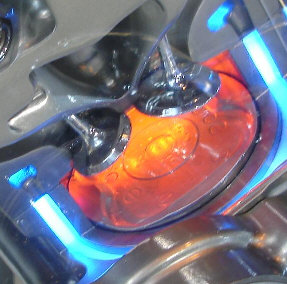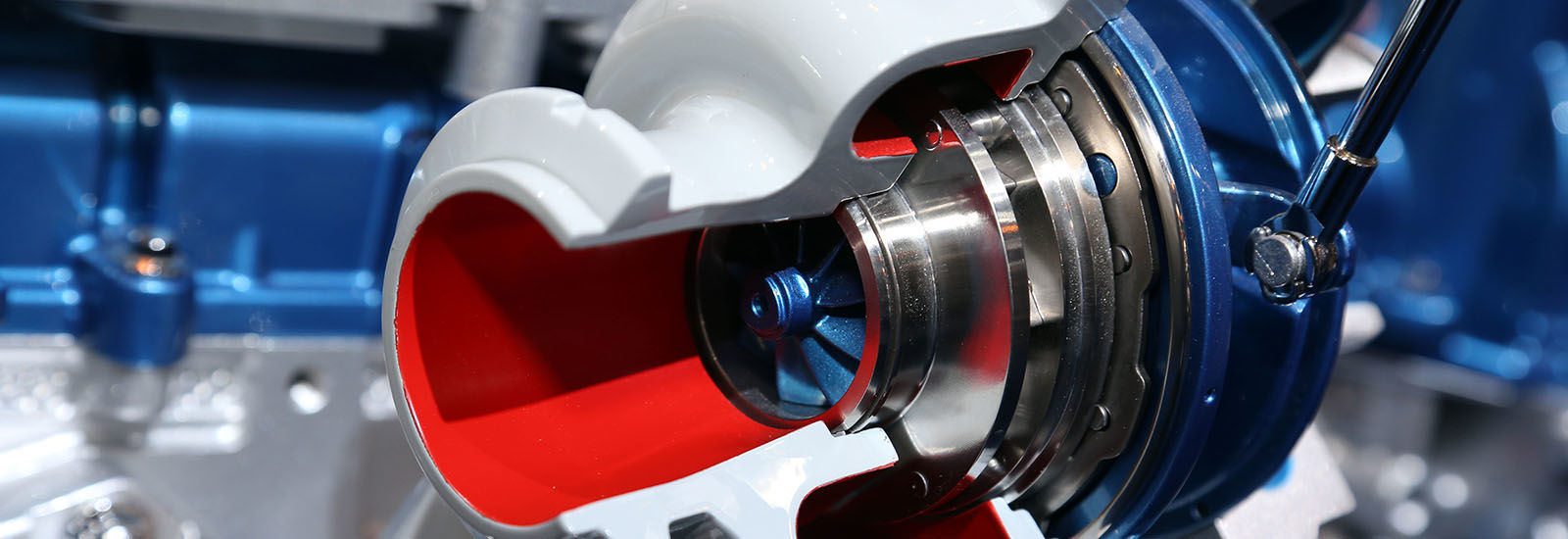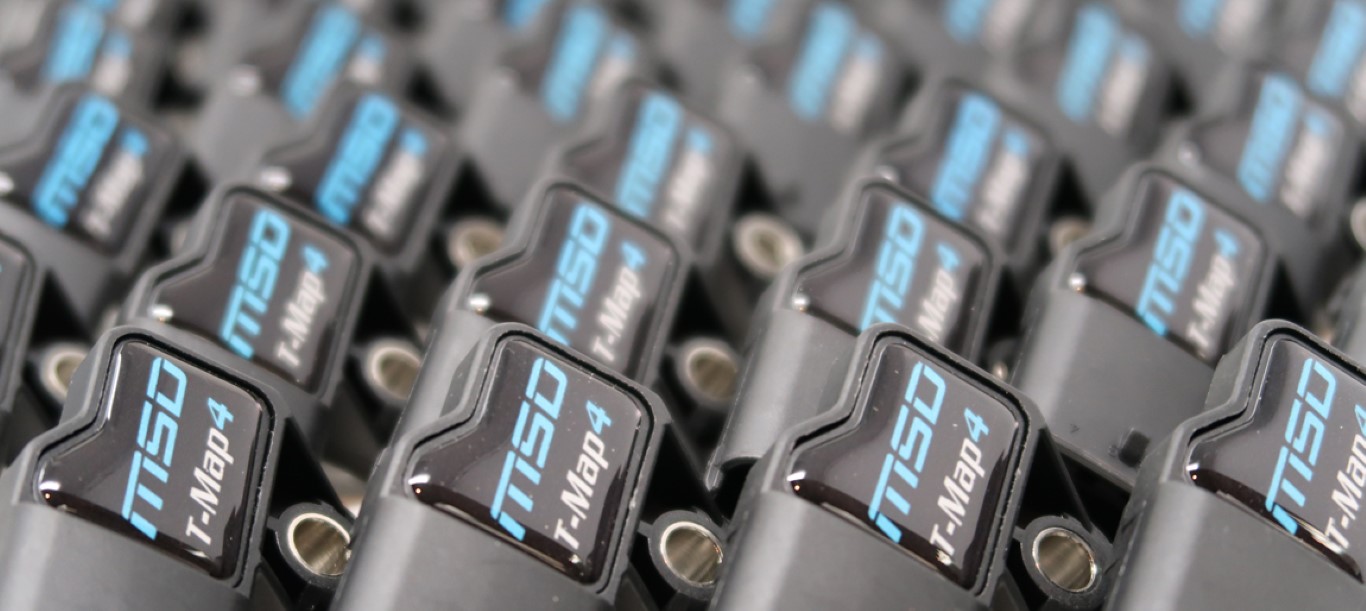Managing the load...
As Ecoboost tuning moves further forward, one of the problems we knew we would eventually run into was that of managing the ever increasing loads we plan to run.
As the management system is speed density based, it utilises a pair of pressure sensors in order to control the load. The manufacturer will always use a map sensor with just a little bit of headroom over and above the pressure that is actually required. This way, they have maximum resolution for the sensor output voltage scaling. In the case of most Ford Ecoboost engines, they have used a pair of 300 KPA pressure sensors, one of which incorporates air temperature as well. (Known as a tMap sensor) And that 300KPA limit, is where our problems began...
What is a MAP sensor?
MAP means Manifold Absolute Pressure and as its name suggests the sensor reports the absolute pressure in the manifold at any given time. To petrol heads - that’s your boost or lack of!
They are a simple sensor that once fed with a voltage from the ECU, will send out a variable voltage according to the pressure it sees on its sensor. This output is typically somewhere between 0.5v and 4.5v. As an easy to understand example we could say that we have a sensor here that outputs in a linear fashion, starting with 0.5v at 20KPA and ending at 4.5v at 300KPA. Once we have told the ECU this information, it will know the pressure in the manifold at all times.
Some sensors have the air temperature sensor built in as well, these are called tMAP sensors.
What kind of MAP sensors does a typical standard vehicle run?
Well, all engines have a pressure range within which they operate. For example, a modern turbo diesel engine doesn’t see high vacuum during normal operating conditions as they are an excess air engine with no throttle control (engine speed and power is controlled via fuel delivery, not air load), but they may well see high boost pressures in excess of 300KPA so they often have a 350 or 400KPA sensors. Those sensors are designed to typically operate from 60KPA upwards and do the job on a diesel engine just fine.
However, a modern petrol engine will typically run down to around 30KPA or less on overrun and other low throttle high engine speed situations. The Ford Ecoboost engines draw right the way down to 23kpa at times and then under load, the standard car goes as high as 270KPA. In this case, a 20 - 300KPA sensor was chosen by Ford.
Tuning within the standard sensors parameters.
The 300KPA sensor fitted means that we can have up to a 300KPA boost limit (Approx 29psi) to safeguard the engine in case of mechanical failure like a split pipe or damaged wastegate causing massive boost pressures for example, and that leaves us free to ask the ECU to run fully targeted and fully controlled pressures of up to around 290KPA whilst still keeping a 10KPA margin between acceptable everyday boost and us accidentally triggering the over-boost strategy that will take our boost away from us and trigger the management light.
Admittedly, running 290 KPA and retaining a limit at 300 KPA gets a bit tight at times as it doesn’t take much error to cause the occasional over-boost trigger and for this reason its easy to see why so many tuners just turn the limits off and get rid of the headache, but to my mind, this is just inviting much bigger headaches as these vehicles age and things start to fail. (loose actuator pipes etc cause over-boost issues)
We always retain the pressure and temperature limits and refuse to run this management system without them. Its very rare that we see an over-boost issue on one of our clients calibrations and when we do it usually just points to a minor vehicle issue that’s easy to rectify. The owners are almost always very happy to see first hand that our safety limits are fully active at all times!
Raising the bar...
OK, I know, "BAR" is old school, but "raising the KPA" sounded rubbish! So, what happens if we want to run more than 300KPA of boost to achieve our target power level? Well typically unless we install an add on manifold pressure sensing device that has some control over the management system for safety, we only have two options.1) Just... Don’t.
or
2) Turn the pressure limits off completely and just force the boost up with WG duty cycle.
If you have read my quite in depth blog called Boost control, the Ecoboost way you will already understand that these modern ECU's have a very complex air load path that absolutely requires full control of the pressures both before and after the throttle body in order for the engine to perform as effectively as Ford intended. So if we, as tuners require a targeted and controlled 330KPA of boost pressure, we simply MUST find a way for the ecu to be able to accurately monitor and control it at all times. Simply targeting more boost than the ECU can see would mean running high boost with no safety limits.
There are tuners out there more than happy to do that though, with a great many running more than 300KPA and just hoping the engine always runs the same boost they saw on the dyno. The highest boost figure I have personally seen on a 300KPA sensor equipped Ecoboost on my own dyno was a 500+ PS Borg equipped car running a staggering 390KPA (37psi). It was OK in 3rd and 4th at around 290 / 300 but in 5th and 6th it was running massive boost. No doubt at all in my mind that it was running that boost up any big hills in lower gears too!
Without data... all you have is an opinion!
Perhaps interestingly to some owners. The vehicle above was COBB Accessport equipped and that means it could monitor and record hundreds of parameters to keep its tuners / owners informed of things going wrong. But of course the Accessport Min/Max screen and recorded data-logs all reported 29psi peak boost, because after 29psi the MAP sensor was maxed out. It simply couldnt’t see the boost carry on past that figure! The logs did however record us some seriously flat 29psi boost lines in the data-log which is what made me so suspicious and led to the car coming to see me in person.
Sure enough, the management had no limits enabled and no control over how much boost was being generated!
Bad data... it really can be as bad, or worse than no data at all.
Enter the MSD t-MAP4.
All the above issues with the 300KPA limit came to a head during development of our MSD 540 conversion with the Focus RS MK3 in late 2019. Even though typically, the turbocharger we have chosen will do over 500bhp with around 290 KPA (27psi) the management system will raise or lower boost pressure according to atmospheric conditions in order to meet the load targets I have specified, so on an ideal day at sea level the boost will be 290 KPA but in less than ideal conditions or at different elevations the system may target 270 or 310 KPA in order to make the same power under these different atmospheric conditions. This means we needed to be able to see and control lots more pressure!
In an ideal world we could have just used one of the existing three tMAP sensors already out there that will just fit right into the EcoBoost manifold and intercooler, but they all appear to be based primarily on the existing Bosch 350 and 400 diesel units and they simply don’t record pressure accurately below about 50KPA, and that leads to drive-ability problems. The Ecoboost optimum stability VCT programming stragey leads to unusually low manifold depressions and the currently available sensors we tested all had side effects at really low throttle openings due to not giving stable, repeatable readings below about 50KPA.
Another potential alternative was to use one of the excellent existing MAP sensors out there already that were more universal in fitment (but mounted to a wing instead of the EcoBoost manifold and intercoolers) and find a way to adapt them to the vehicle, but then we would also need to adapt the wiring and find and mount a separate solution for temperature as that sensor absolutely MUST be situated in the manifold of course.
The solution? Create our own...
After bringing in an external company to manufacture a product that met our requirements, we now have our own 20-400 KPA tMAP sensor that reads all the pressure and temperature we should ever need and fits the Ford Ecoboost (Focus and Mustang 2.3 Etc) manifold and intercooler as a direct replacement. It has been an absolute drama to get it just how we want it and I think Kenny is actually starting to have nightmares about driving round the lake district logging high manifold depression HDFX cam pairs! Logging high boost HDFX tables is certainly a lot more rewarding than finding a mountain pass and going down it with an almost closed throttle and datalogging!
But its done now and we have finalised the testing on the two Focus RS Mk3's we have here in house. (Our own standard turbo equipped MSD 420 car and the big turbo MSD 540 development car)
The new sensor even has a name now. (Its had a few since we started this project last year actually, but I cant print them here! Suffice to say i have at times been rather creative with the "T" in its name.)
Its final name is (perhaps a little unimaginatively?) MSD t-Map4 and it will feature in many of the higher boost tuning packages that we have in the pipeline for the 4 cylinder Ecoboost units!. (Note: Each car needs 2 ) and it is finally available for purchase on our webshop here:
**Update March 2024**
We now have a similar 400KPA unit that directly replaces the 2.5 and 300KPA MAP sensor used on many Ford, Jaguar, Landrover and Volvo 2 and 2.5 litre engines, including one for the ST250 TIP sensor. This new product is available on our webshop right now and is called the MSD TMAP4-A sensor. (A = Because its body is "angled")

Further Reading...
If you are interested to read some far more technical stuff about Ecoboost, perhaps how these systems are modelled in actual Nm of torque and convert your torque request into air loads, you will find this blog I wrote about Ecoboost torque control will tie in very nicely with the one you have just read. There are also others on Boost control and Knock control too.
Author:
Stewart Sanderson - May 4th 2020 (Star wars day!)






